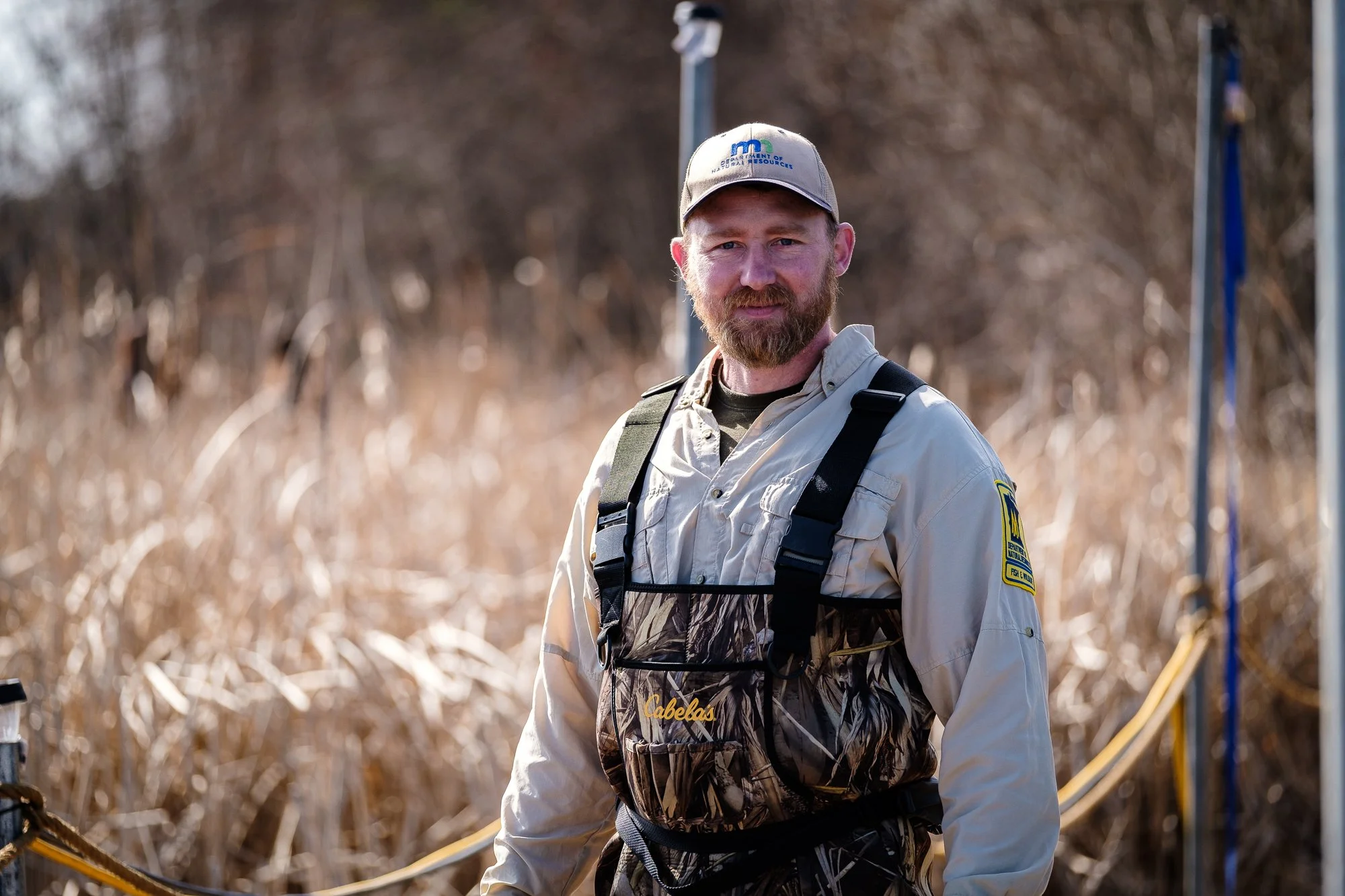There’s been a lot of wind lately, most of it blowing in from the west or northwest. While it’s made for generally good fishing conditions, not everybody has the equipment to take advantage of it. Because of that, not everybody has been fishing in their preferred early summer fishing areas. Folks that do get where they want to be, are reporting good success for walleyes. Folks that don’t are reporting mixed results, depending on the water and habitat conditions they encounter.
Surface water temperatures have been slow to rise, but this week they have advanced. It’s common to find temperatures ranging from 63 to 66 degrees in mid-lake areas on Winnie. Backwater areas in the flowages, shallow bays and isolated calm areas of the Cutfoot Sioux chain are warmer. On Wednesday, one group reported 69 degrees in a shallow bay, the warmest we’ve heard of so far this spring.
Water clarity caused problems for anglers earlier this season, but we notice that there is a slight, and welcome stain in the water now. Probably caused in part because of inflow from feeder creeks and flowages that were low, but are now filled, even overflowing in some areas, by recent rainfalls. The darker, faster warming water flowing into the lake has provided just enough “dinginess” to make walleyes move shallower and become more aggressive. When the wind blows, they can be found on shoreline breaks, and on the flats in water depths of 6 to 12 feet and can be caught relatively easily.
On Wednesday, one of the area’s top fishing pros provided this; “I’ve been able to do more drifting, and slow trolling recently. I’ve noticed that the water is darker, not much, but enough to allow me to fish over the top of the small schools I locate. That makes it easier for folks who don’t have the high-end electronics, the fish are staying put once they’re located.”
Walleye locations on calm days vs breezy days
While the water is somewhat more turbid, it is still clear though and on calmer days, walleyes still become flightier, and more difficult to pin down. On calm, or bright days, they move across the flats, into deeper water. Look for them in cuts, or inside corners located along the breaks into deeper water. Key depths range from 18 to 24 feet on the transition between sand, and softer bottom areas. There are also some fish moving off the flats and onto shoreline related, mid-lake structure.
Points and steeper breaklines that lead directly from shore, and into the deeper main lake basin are always the first to fill up with fish. Popular bars like the Bena Bar, Sugar Bar and Horseshoe are just a few examples. Look at your map and select locations like the one seen here, areas that offer walleyes a travel path between the shallows, and the deep basin. Later, fish will follow insect hatches, and migrate across the softer, marly bottom and begin inhabiting more isolated structures in the middle of the lake.
Along with varied locations comes varied presentations. Some of the more effective fishing presentations for walleyes right now include jig and minnow, trolling spinners, Lindy Rigging with live bait and slip-floats, where to use each depends on where you find fish. Walleyes on the shallow breaklines, and mid-depth flats are responding well to classic jig and minnow presentations.
Trolling spinners have worked best in areas where vegetation is growing, primarily in shallow areas of the flowages and back bays. Typically, spinners are tipped with medium size fatheads, but night crawlers can also be used effectively.
Lindy Rigging with leeches, night crawlers and large minnows has been effective along steep drop offs on “the bars”. Walleyes appear to be showing a preference for night crawlers today, but that can change periodically. It’s best to carry some crawlers and some leeches and switch them up until a preference is discovered. Most associated with targeting large fish, creek chubs or redtails in the 6-to-8-inch size range can be used on Lind Rigs too. At the moment, using minnows will trigger strikes from northern pike too. So, keep this in mind when you’re looking for a larger pike to put on the grill.
Slip-floating works best when walleyes are found on small rock rises, on larger mid-depth flats. The structures provide fish with a place to gather in tighter groups and that helps keep lures in the strike zone. Leeches are the most common bait for bobber fishing, but don’t overlook a night crawler. Using a 1/16-ounce jig, cut the night crawler in half and fish with larger, dark brown nose end; this method can be highly effective for walleyes.
Perch and panfish haven’t been making many headlines around here. When folks find them, perch of quality size are being caught, but they are nomadic and rarely show up twice in the same spots. The best bet for catching some jumbos is to wait for overcast days and fish in vegetation. Small packs of fish move through patches of emerging plants feeding on minnows. Trolling with spinners is a good search tool for locating them. Jigs tipped with medium size fatheads fished vertically is a reliable presentation for zeroing in on them.
Crappies have been illusive too! Apparently, they’ve decided not to spawn this spring, and when found, are located in classic post-spawn habitat like cabbage. The leafy vegetation offers good cover, where the fish can ambush schools of small minnows. Casting small jigs tipped with plastic action tails is reliable, and it’s best to fish either during the early morning, or late evening when the fish are most active.
All things considered; fishing has been good despite the somewhat turbulent conditions. It’s just a matter of time before weather patterns stabilize, and classic early summer patterns take hold. We’ll be watching, and reporting as the season progresses, please stay tuned.
















